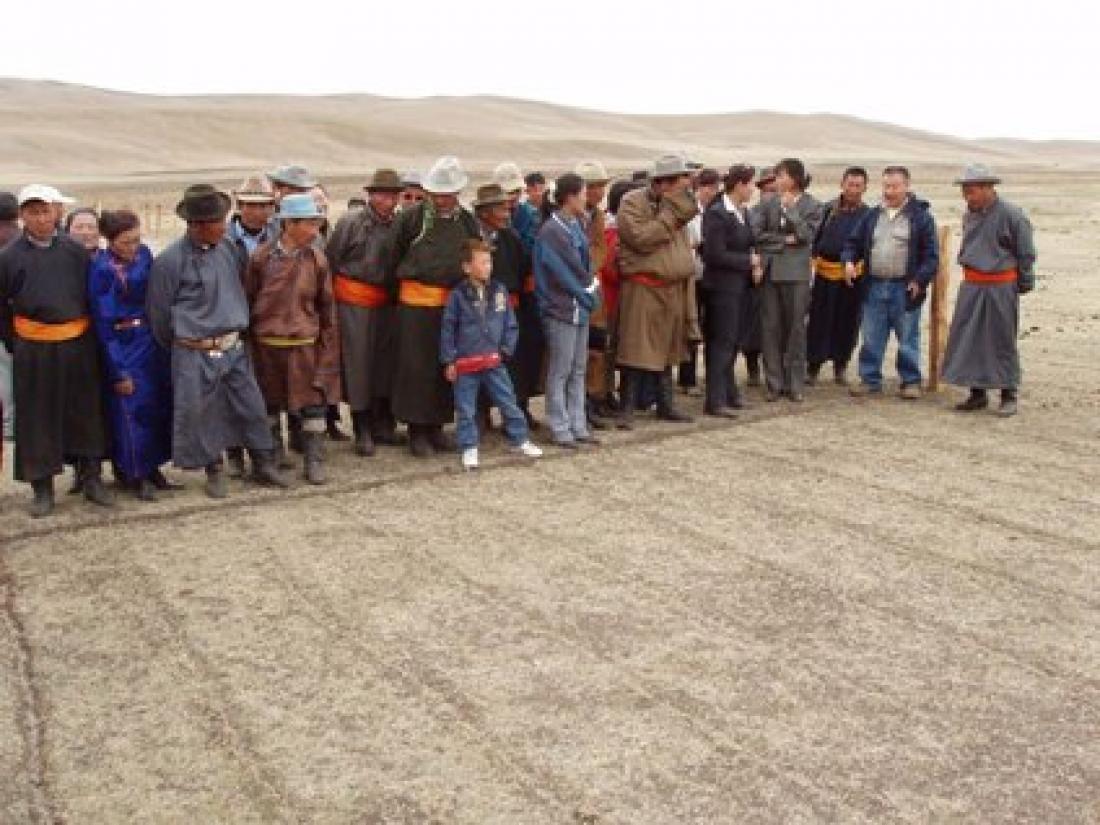Mongolia's nomadic herders are at the centre of a co-managment success story.
Collaborative Approach Passes Field Test on Mongolian Grasslands
This article first appeared in The Hill Times on December 7, 2009
A new approach known as co-management of natural resources is an effective alternative in many circumstances for managing common resources sustainably and equitably.
Common property resources such as soil and water are the stuff of life. But they are also potentially rivalrous and, if not managed wisely, can be used up. This year’s Nobel Prize in economics highlighted this fundamental global fact in honouring Elinor Ostrom for her work on the governance of “common pool” resources, such as forests, fisheries, and grasslands.
The world’s poorest people have frequently been blamed for mismanaging the natural resources on which their lives depend. But across the developing world, initiatives supported by Canada’s International Development Research Centre (IDRC) have shown that there are ways to reduce poverty and protect a community’s resource base at the same time. These two important goals can complement each other, rather than compete, even in the most difficult environments.
Decades of IDRC-supported research and innovation in this field have generated a wealth of evidence: A new approach known as co-management of natural resources is an effective alternative in many circumstances for managing common resources sustainably and equitably. This international experience holds useful lessons for Canadians as we contend with our own tough resource management challenges.
Co-management refers to collaborative arrangements in which local resource users, such as fishers, farmers, or herders, share responsibility and authority with governments for managing natural resources. The approach draws on the experience and expertise of all the players involved. Local users contribute their deep knowledge of the resource and past customary practices. Governments provide an enabling environment, including supportive policies and technical advice.
Mongolia’s nomadic herders are at the centre of one such success story. In the early 1990s, the former Soviet satellite state entered a period of profound change. For 70 years, the state had owned all the land, as well as the goats, sheep, cattle, horses, and camels that form the backbone of the economy.
As Mongolia moved toward a market-oriented economy, private ownership of livestock was reintroduced. The state retained ownership of the land, but had limited capacity to manage it. The result was an open-access situation that put mounting pressure on a fragile ecosystem.
Grasslands, increasingly affected by drought, became seriously overgrazed. Throughout the 1990s, the number of families engaged in herding more than doubled, and the livestock population increased by 30%. Currently, close to half of Mongolia’s three million people – and more than 40 million animals – are involved in the livestock sector.
Concerned about degraded grasslands and declining incomes, Mongolians were open to new ideas. As a result, for the past decade IDRC-supported researchers have been field testing the co-management approach in three of the country’s representative ecosystems – dry steppe, forested steppe, and high mountain steppe.
Dr Hijaba Yhkanbai of Mongolia’s Ministry of Nature, Environment and Tourism, who has led the field studies, is enthusiastic about the new approach. Comanagement has meant more productive pastureland, healthier herds, and increased incomes at the pilot sites.
Herders are organized into strong associations that are taking the lead in reshaping the use of the grasslands and other resources. Working alongside government officials, schoolteachers, forest wardens, and others, the herders have helped put together agreements that spell out how the grasslands and related resources are managed.
The successful pilot activities are now being extended to new communities. And they have already led to changes in national policies and laws governing grasslands, forests, and water use.
Co-management helps to secure access to resources for poor local communities, and to build new institutions that give them a greater voice. And together, everyone with a stake in the health of a resource experiments with new ways of doing things, including exploring alternative livelihoods.
This is not an easy form of management. But it can be made to work if all parties engage seriously in the effort, over a long period of time, learning by doing as they go along. Indeed, co-management both encourages and generates adaptability — a vital tool for Mongolia’s herders, and other local resource users around the world, in face of the climate-related challenges of today and tomorrow.
Ronnie Vernooy works with IDRC’s Rural Poverty and Environment program.
by Ronnie Vernooy
2009-12



